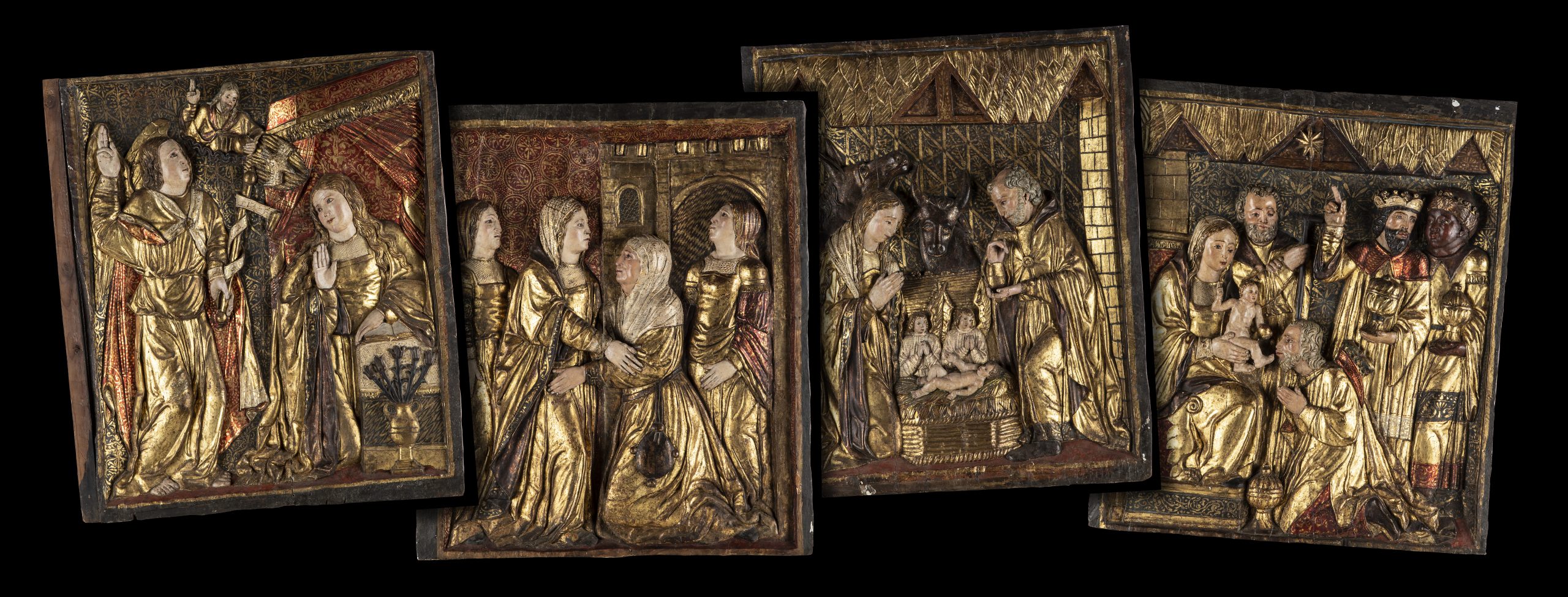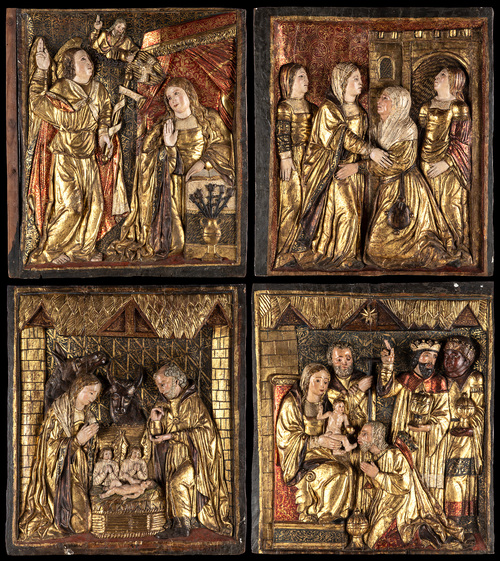Color in Spanish sculpture
One of the most fascinating and valuable facets of sculpture in Spain is polychrome. When we stop before a piece like the Renaissance reliefs (35111620) we must imagine that it is very likely that more than one artist worked on them. For the execution, they would have required a master carver, a craftsman who would cover the wood with plaster and then define the shapes and contours, and finally the gilders and painters whose work often forgotten was the one that provided the true final result.
Spanish polychromy was a true art and proof of this is that notable Baroque painters even polychromed sculptures such as Zurbarán himself. This genre had a very outstanding value since the sculptures had to achieve two results, on the one hand, to be truthful and realistic, on the other to impact and show the divine character of the motif in a theatrical way.
The realism of the incarnations, the subtle details of the veins or the cheeks, or even the extreme precision of each hair that linked the carved loops with the forehead, all of them effects to make the image more believable and thus bring it closer to the faithful. Human faces should denote their reminiscence of the holy and divine and this was achieved through the rich effect produced by the stews or in other words, the mixture between the gilding of gold, silver or copper sheets with the painting itself, achieving thus brilliance, sparkles, reliefs and shapes that added an additional three-dimensionality to that of the sculpture. Let us highlight, for example, the sensation that the Virgin’s hair produces in the relief of the Annunciation. The gold that is superimposed on the paint, together with the play of volumes produced by the modeling of the hair waves, manages to create an extraordinary aura to the candid face of Mary.
The richness of these details was not only focused on the figures, the mantles, the fabrics or the scenographies that surround all the compositions, they maintain that effect. We find Damascus silks, brocades, the weft of linen, and even the subtle shape of feathers in the Holy Spirit himself.
The set of the four Renaissance reliefs that we present for auction is an exceptional example due to its state of conservation and unity since the image that we see in these works closely resembles the one it had at the time they were conceived.







